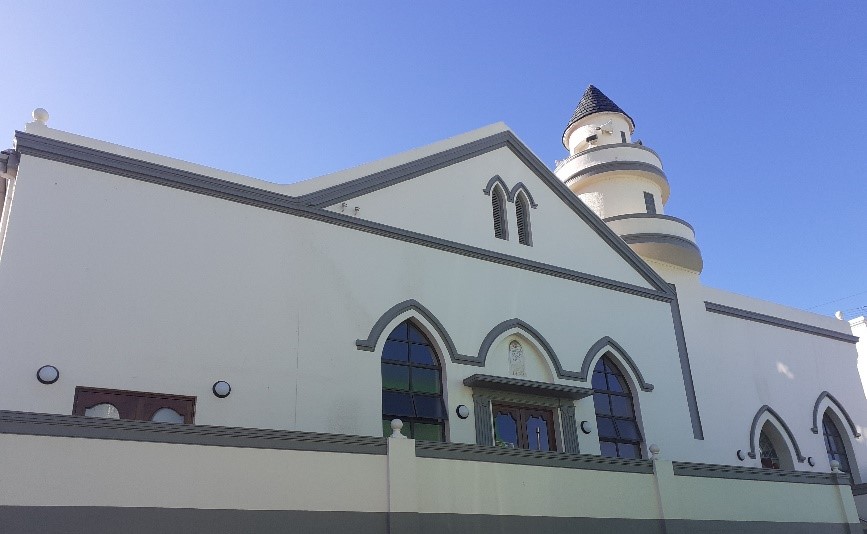Mosque Shafee in Cape Town
17 juni, 2024
In the image below, you can see a picture of a mosque and this mosque is Mosque Shafee which is situated in the Bo-Kaap area of Cape Town. I found the mosque to be beautiful and it was interesting to see the building because in Finland mosques are not recognisable in the same way from the outside. The land for the mosque was acquired by Imam Hadjie in 1859 and it became the fifth mosque to be built in the Bo-Kaap area. The Bo-Kaap area is an area which previously was called the Malay area and was a racially segregated area for Muslims in Cape Town. I happened to be in Cape Town as a part of a university course but my going to Mosque Shafee was done in my free time.

Mosque Shafee in Cape Town. Photo: Henrik Wallén
We were supposed to eat dinner at the restaurant Biesmiellah in the evening but were given free time until then. I wanted to visit a mosque and talk with an imam and Mosque Shafee was the closest one I and my friend could find. The Imam was not around but the caretaker of the mosque told us about the building and the congregation of Muslims that worshipped there. The congregation were followers of the Shafi school, of thought and practising the Sufi mystic methods was not common which surprised us because we had visited a kramat earlier and been told that Sufi practises were common among the Muslims of Cape Town. It is however not too surprising that a leader would deny mystic practices among his congregation and instead suggest that standard Hafi practices were the norm in the congregation.
The caretaker of the mosque also showed us where the Muslims wash before prayer and told us how the arms, feet, hands, nose, and mouth had to be washed before prayer so that a Muslim’s words and actions during prayer were clean and not tainted. We were also told of the education that the children were given in the evenings in Arabic and The Quran. It is always interesting to hear about religious education because in Finland where I am from Sunday school is very rarely something that children partake in. We even observed some of the children leaving the mosque after receiving their teachings and teasing one another. Their behaviour was what I would have considered normal and childish even in my home country and it was nice to see that children seemed the same the world over even if these children were living in quite different conditions from what I had during my childhood.
Finally, the caretaker also told us a little about how members of the congregation would go to Egypt to study and how he had partaken in the Hajj. The bulletin board in the mosque gave some instructions on what to do should one want to partake in the Hajj. The caretaker told us that he had to wait a couple of years after putting down his name on a list because only a limited number of Muslims from each country can partake in the Hajj. He also told us emotionally how much joy he had felt when he walked around and touched the Kaba. The emotion with which he spoke of this experience seemed genuine to me and very much seemed to indicate that this man was a true believer. It was also a little sad to hear him talk about Mecka and the Kaba since I will certainly never see the city as I am a Christian.
Henrik Wallén
The theological course Abraham Goes Global is a cooperation between Åbo Akademi University and Stellenbosch University (South Africa) funded by the Finnish National Agency for Education and The Polin Institute 2023-2024 and 2024-2025. The aims are to widen the perception of theology to cross boundaries of religion at both universities, to exchange expertise on contextualised forms of religion, and to deepen the students’ and teachers’ understanding of interreligious and intercultural dynamics in religions. This blog text is the fifth of six blog texts to present reflections of the Finnish students visiting South Africa in February-March 2024.
